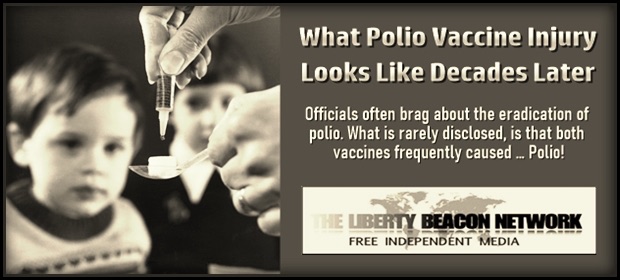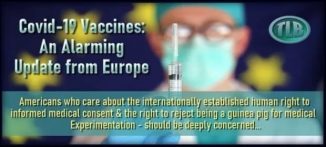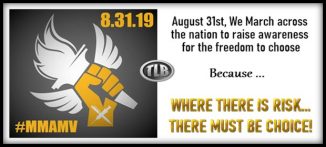
What Polio Vaccine Injury Looks Like, Decades Later
The Children’s Health Defense Team
When touting the merits of vaccination, public health officials often brag about the campaign to eradicate polio. What they rarely if ever disclose, however, is that both the inactivated polio vaccine (IPV) developed by Jonas Salk and the live-virus oral polio vaccine (OPV)—developed first by Polish scientist Hilary Koprowski and later by Albert Sabin—frequently have caused the very condition they were supposed to prevent.
U.S. regulators fast-tracked the Salk vaccine in 1954, deliberating for just two hours before approving it for wide-scale use. Despite Salk’s belief that a “killed-virus” vaccine “could not accidentally cause polio in those inoculated,” the number of reported polio cases rose immediately and dramatically within a year, with particularly steep increases in some states—including a 642% spike in Massachusetts. According to one account, National Institutes of Health doctors and scientists were “well aware that the Salk vaccine was causing polio,” and some health departments even banned it. To make matters worse, in a “massive and highly publicised disaster,” over 200,000 unsuspecting children received a batch of polio vaccine later determined to be defective—manufactured by Cutter Laboratories, the batch contained improperly inactivated (and, therefore, live) polio virus that gave polio to at least 40,000 children.
In the early 1960s, the “cheaper to make, easier to take” live-virus OPV began to supplant the IPV as the polio vaccine of choice and remained in place for nearly 40 years. By then, scientists had been testing the OPV on American children for about a decade; as reported by Koprowski in a 2006 paper, U.S. testing of his oral vaccine took place from 1951-1962. Sabin tested his OPV on millions of Soviet citizens in 1959, immediately followed by U.S. trials. By the summer of 1960, Sabin’s OPV was on the cusp of licensure.
Knowing that children gravitate toward sugar, U.S. health department personnel who administered the oral polio vaccine “helped the medicine go down” by delivering the vaccine serum on sugar cubes. By 1962, “children were lining up at school, tongues out to receive pink-stained lumps of sugar impregnated with Albert Sabin’s live, attenuated oral polio vaccine.” What officials neglected to tell the millions of American children who happily crunched on their sugar cubes was that the OPV, like the IPV, could give them full-blown, iron-lung-type polio. Nor were recipients of either type of polio vaccine informed of their exposure to the cancer-causing viral contaminant SV40, derived from the monkey kidneys used to produce the vaccines. When some vaccine recipients went on to develop polio or cancer (or both), all too often they met with an evasive and uncaring response from public health authorities who refused to admit that their vaccines could cause lifelong damage.
A true story
Cynthia Grady, now almost 65 years old, is a North Carolina resident who received a coerced “sugar cube” polio vaccine in South Carolina in July, 1960 and has lived with chronic pain and severe health problems ever since. Grady and her nearly 85-year-old mother, Connie Gallagher, consented to an August 2019 interview with Children’s Health Defense to tell Grady’s tragic and hair-raising story of vaccine injury and describe their encounters with an officialdom apparently committed to obfuscation, stonewalling and denial of harm.
At the time, Grady and Gallagher (who had divorced Grady’s biological father) lived in New York. In July of 1960, Gallagher drove south to drop her “very healthy” six-year-old daughter off with relatives in South Carolina before continuing on to Florida to visit her parents. Unfortunately, Grady’s biological father—a member of the South Carolina Cherokee Nation—decided to take advantage of Gallagher’s absence and engaged in what would now be termed a parental kidnap, whisking the bewildered child away from her aunt and uncle shortly after her arrival. To qualify for social welfare benefits allocated on the basis of “number of mouths being fed,” he immediately took Grady to the Cherokee County Health Department for vaccination.
Scared and crying, Grady explained that she had already had her vaccines, which she had received in injected form prior to starting kindergarten the year before. Despite her protests, the health department employee got her to swallow a sugar cube polio vaccine. Within a couple of days, while staying in a house that had only an outhouse, Grady began to profusely vomit and became so ill that she was taken to an isolation room in Cherokee Memorial Hospital. Her rapid deterioration then prompted a transfer 25 miles away to Spartanburg General Hospital, where she found herself in a special basement ward with 20 or more other children in similar condition. All of the children, Grady included, were diagnosed with paralytic polio.
Grady’s laboratory report form dated August 4, 1960 (not obtainable by the family until 2016, see below) clearly shows that Grady and the other children in her basement ward were closely monitored by the CDC/Public Health Service’s “Poliomyelitis Surveillance Program.” The lab report provides evidence of positive culturing for “monkey kidney” and also shows that Grady tested positive for polioviruses Types I, II and III.
By the time that Gallagher received the terrifying phone call that her daughter was in the hospital in critical condition, Grady was in an iron lung, unable to speak and paralyzed from the neck down. (Her time in the iron lung ultimately left her with a scar on the back of her neck and motor neuron imbalances as well as heart deformities.) After Gallagher rushed north to join her daughter, finding that Grady could only move her head and blink “yes” or “no” in response to questions, Gallagher repeatedly heard her daughter described as being in “grave condition.”
The CDC’s Poliomyelitis Surveillance Report No. 205, published on August 5, 1960, indicates that the CDC monitored 33 cases of paralytic polio (and 10 nonparalytic cases) that occurred in the tri-county area of Cherokee and Spartanburg counties (South Carolina) and Cleveland county in North Carolina between June 11 and August 6, 1960. The report states that 11 of the 33 paralyzed children had previously received one or more doses of the Salk polio vaccine but does not discuss the OPV. However, during the many days spent at her daughter’s bedside at the Spartanburg hospital, Gallagher learned from the other mothers present that all of the children in the special ward had received the sugar cube vaccine and had similar monkey kidney serum test results.
Mother and daughter recall that the CDC “brought in equipment like you wouldn’t believe” and put Grady through the rigors of various forms of physical therapy and rehabilitation, not always reflecting good clinical decision-making. Gallagher reports never receiving a single medical bill nor any medical documentation of Grady’s treatment in South Carolina, leaving no paper trail. With Grady still largely unable to walk, the pair eventually returned to New York and later moved to Oregon. Many years of painful rehabilitation followed, and it took seven years for Grady to be able to walk without crutches. Since then, Grady has endured one costly medical problem after another, including meningitis, tachycardia, mood swings, problems with balance, a partial and then full hysterectomy, gallbladder and appendix removal, ovarian cancer and more. At present, Grady has “good days and bad days,” with many spent mostly in bed. Her ongoing balance difficulties have led to numerous falls, concussions and broken bones.
The runaround
For years, mother and daughter tried to obtain Grady’s hospital records, to little avail. In 2001, the Spartanburg hospital even told Grady that they had “no record that you were ever here.” After renewing their request in 2016, a kind hospital employee dedicated two weeks to searching through the institution’s microfiched archives and stumbled on the apparently suppressed records, which included the revelatory CDC lab report.
For many years, the government repeatedly denied Grady’s applications for Social Security Disability, telling her that her health problems were “all in her head.” Eventually, Social Security awarded Grady a small monthly disability stipend (currently $645), while still periodically asking her to “jump through hoops” such as seeing a psychiatrist.
The National Vaccine Injury Compensation Program (NVICP) was established in 1986 and became operational in the fall of 1988. Although it included a meager provision for individuals like Grady who had sustained vaccine injuries prior to October 1, 1988, there were several caveats—those individuals had to know about the NVICP, had to have medical documentation to prove the case and had to file their claims by January 31, 1991. The program also capped the number of petitioners who could be compensated retrospectively at 3,500; by early 1993, the slow-moving program had only adjudicated 32% of retrospective claims and had only awarded compensation to half of those (641 claimants). In 2014, the GAO reported that the average time to adjudicate a claim remained three and a half years.
From the beginning, the NVICP has done little to publicize its existence, so it is unsurprising that Grady and Gallagher did not learn about it until decades after the 1991 deadline for filing a retroactive claim. Moreover, the hospital in Spartanburg did not hand over Grady’s medical records until 2016. When Grady and Gallagher first reached out to the NVICP, the program told them to get a lawyer and sent them a list of 150 attorneys. More than 75 attorneys refused to take the case: “We couldn’t get an attorney to touch it with a 10-foot pole.” In an unanswered letter to President Trump, Grady noted her stepfather’s military service during World War II and stated that she had been “raised to believe that this is one great country and that there is justice for all,” adding that something was “wrong with this picture” when a criminal gets a court-appointed attorney while she couldn’t get one.
Next, Grady asked for help from her congressional representative, Congressman Mark Meadows. For eight months, the Congressman’s staff tried to help and even submitted a complete set of paperwork to the NVICP. After months of getting nowhere, the Congressman’s staff was unable to continue dedicating scarce time to the case.
Finally, aware of a legal provision called “equitable tolling,” Grady and Gallagher filed a retrospective pro se petition (i.e., without an attorney) on April 6, 2017. Equitable tolling “means that a person is not required to sue within the statutory period if he cannot in the circumstances reasonably be expected to do so.” The NVICP assigned a case number (17-509V) and a Special Master (Mindy Michaels Roth), conducted two audiotaped status conferences by phone and asked for a complete set of medical records, information about current health status, and equitable tolling paperwork; months later, Special Master Roth dismissed the petition “on statute of limitations grounds.” Grady followed up with a motion for review, which was met first by inappropriate procedural steps and then by complete closure of the case.
The dismissal document refers to a prior legal decision discussing the intent of the 1986 Act that put the NVICP in place, stating that while “Congress sought to extend relief to those vaccinated before the Act went into effect,” it “also wanted to provide the government with a definite date after which it would no longer have to defend against any such retroactive suits.” In other words, “tough luck.” In a phone conversation between Grady and Special Master Roth and a Department of Justice attorney, Grady asked, “What am I, your collateral damage?” The reply was, “Well, if you have to put it that way.”
Collateral damage
Historians admit that the history of polio vaccines is littered with unsavory “tough choices”— as one historical account puts it, “the scientists who raced toward effective polio vaccines tested their work on prisoners, institutionalized children, and tens of thousands of monkeys.” A Harvard-based writer goes even further, stating that “The success of mass immunization…comes at a price” and that “Many children…suffer major injuries and death from the administration of vaccines.”
In 2000, the U.S. stopped administering oral polio vaccines and reverted to the IPV after being forced by outraged parents to admit that the OPV was resulting in an unacceptably high number of actual cases of polio in children. (The OPV is still in wide use in many other countries.) Dr. Walter Orenstein, then the director of the CDC’s vaccination program, unashamedly described his prior stance, stating that when a small number of children a year contracted polio but millions were assumed to be protected, “my feeling was it was a small price to pay.” However, when confronted with the tragic story of a young man, David Salamone, who died at age 28 of complications from childhood vaccine-induced polio, Orenstein seemingly changed his tune, saying “Suddenly, the eight to 10 people were not just tiny numbers but were real people. Just seeing how these people’s lives were ruined made a big difference.”
Grady, likewise, wants people to understand that she is a “real person.” As she states:
I want to be able to tell my story and to help change these time constraints on timely filing and make these people understand that it is the residuals of the polio monkey kidney serum that took a 6-year-old girl and many, many others years of distress, misdiagnosis with health problems, caused heart problems, cancer and motor neuron problems with the brain and lots of other disability. I want them to understand that we were not properly informed that there was even a vaccine compensation program back in the ‘80s, that our records were suppressed [for] over 50 years by the CDC and that they were derelict in their duty to follow up and admit the wrongdoing.
************
Original article

••••
The Liberty Beacon Project is now expanding at a near exponential rate, and for this we are grateful and excited! But we must also be practical. For 7 years we have not asked for any donations, and have built this project with our own funds as we grew. We are now experiencing ever increasing growing pains due to the large number of websites and projects we represent. So we have just installed donation buttons on our websites and ask that you consider this when you visit them. Nothing is too small. We thank you for all your support and your considerations … (TLB)
••••
Comment Policy: As a privately owned web site, we reserve the right to remove comments that contain spam, advertising, vulgarity, threats of violence, racism, or personal/abusive attacks on other users. This also applies to trolling, the use of more than one alias, or just intentional mischief. Enforcement of this policy is at the discretion of this websites administrators. Repeat offenders may be blocked or permanently banned without prior warning.
••••
Disclaimer: TLB websites contain copyrighted material the use of which has not always been specifically authorized by the copyright owner. We are making such material available to our readers under the provisions of “fair use” in an effort to advance a better understanding of political, health, economic and social issues. The material on this site is distributed without profit to those who have expressed a prior interest in receiving it for research and educational purposes. If you wish to use copyrighted material for purposes other than “fair use” you must request permission from the copyright owner.
••••
Disclaimer: The information and opinions shared are for informational purposes only including, but not limited to, text, graphics, images and other material are not intended as medical advice or instruction. Nothing mentioned is intended to be a substitute for professional medical advice, diagnosis or treatment.




